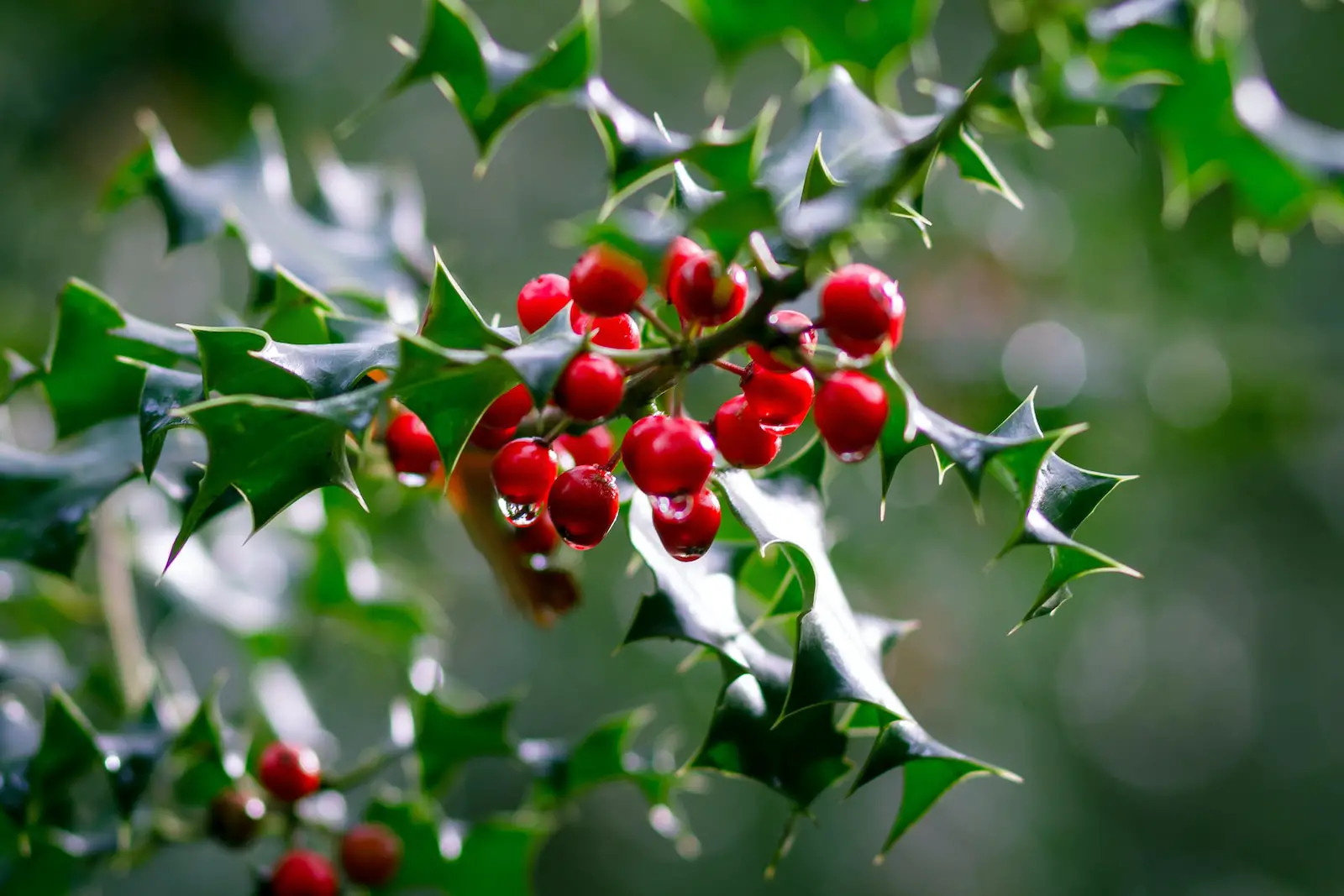Holly is a quintessential symbol of the holiday season. With its rich green leaves and vibrant red berries, it’s not only a decorative plant but also an essential part of various landscapes. This evergreen shrub or tree belongs to the genus Ilex, which includes over 400 species.
The appeal of holly goes beyond its festive association. It serves as an attractive ornamental plant, known for its glossy, leathery leaves and the bright berries that many species produce. These berries are particularly important for wildlife, providing food for various bird species during the winter months.
Holly is not only admired for its aesthetic qualities but also respected for its adaptability and resilience. It can thrive in a variety of environments and requires relatively minimal care. Whether used as a standalone specimen tree, a hedge, or an accent in the garden, holly brings both beauty and practicality to the landscape.
| Attribute | Details |
|---|---|
| Common Names | Holly, Christmas Holly |
| Botanical Name | Ilex |
| Family | Aquifoliaceae |
| Plant Type | Evergreen shrub or tree |
| Mature Size | Varies by species (6-50 feet) |
| Sun Exposure | Full sun to partial shade |
| Soil Type | Well-drained, acidic to slightly alkaline |
| Hardiness Zones | 3-9, depending on species |
| Native Area | Worldwide, especially in temperate regions |
Holly Care
Caring for holly is generally straightforward, but the plant does have specific preferences that need to be considered. Holly enjoys well-drained soil and can adapt to various soil types, although a slightly acidic pH is preferable. Regular watering is necessary, particularly during the first few years, to establish a strong root system.
Pruning can be done to shape the plant, but it’s not mandatory. If you desire berries, keep in mind that most holly species are dioecious, meaning that there are separate male and female plants. Only female plants produce berries, so you’ll need to have at least one male nearby to ensure pollination.
Light Requirement for Holly
Holly prefers full sun to partial shade. While it can tolerate different lighting conditions, providing the right amount of sunlight will encourage healthy growth and berry production.
Soil Requirements for Holly
Holly grows best in well-drained soil that’s slightly acidic to slightly alkaline. Adding organic matter can improve soil structure and provide the nutrients the plant needs.
Water Requirements for Holly
Regular watering is essential for young holly plants. Mature plants are relatively drought-tolerant, but consistent moisture, especially during dry periods, will promote healthy growth.
Temperature and Humidity
Holly is quite adaptable to temperature variations, thriving in the zones it’s suited for. It’s not particularly sensitive to humidity, but in very dry conditions, occasional misting can be beneficial.
Fertilizer
Fertilizing with a balanced, slow-release fertilizer in the early spring can enhance growth. Avoid excessive fertilization as it can lead to fewer berries.
Pruning Holly
Pruning is usually done for shaping purposes. The best time to prune is late winter or early spring before new growth begins. Avoid heavy pruning, as it may reduce berry production.
Propagating Holly
Holly can be propagated through cuttings taken in the late fall or early winter. The cuttings should be treated with rooting hormone and planted in well-drained soil.
How To Grow Holly From Seed
Growing holly from seed can be challenging and time-consuming. Seeds require a process called stratification, where they are chilled for a period to break dormancy. Plant in well-drained soil and be patient, as germination can take up to 18 months.
Common Pests & Plant Diseases
Aphids
Aphids can be controlled with insecticidal soap or neem oil.
Leaf Miners
Leaf miners can cause discolored leaves. Treat with appropriate insecticides.
Powdery Mildew
Maintaining good air circulation can prevent this fungal disease.
Common Problems With Holly
Yellow Leaves
Yellowing leaves may indicate a nutritional deficiency, often a lack of iron. Applying a fertilizer designed for acid-loving plants can correct the problem.
Lack of Berries
If berry production is lacking, ensure that both male and female plants are present for pollination. Inadequate light and excessive fertilization can also inhibit berry production.
Dropping Leaves
Dropping leaves in the winter could be a response to freezing temperatures. Protecting the plant with a windbreak can help.
Pro Tips
- Plant both male and female varieties if berry production is desired.
- Apply a layer of mulch to retain moisture and control weeds.
- Monitor for pests and treat promptly to prevent infestation.
- Consider the mature size of the plant when selecting a planting location to avoid future overcrowding.




